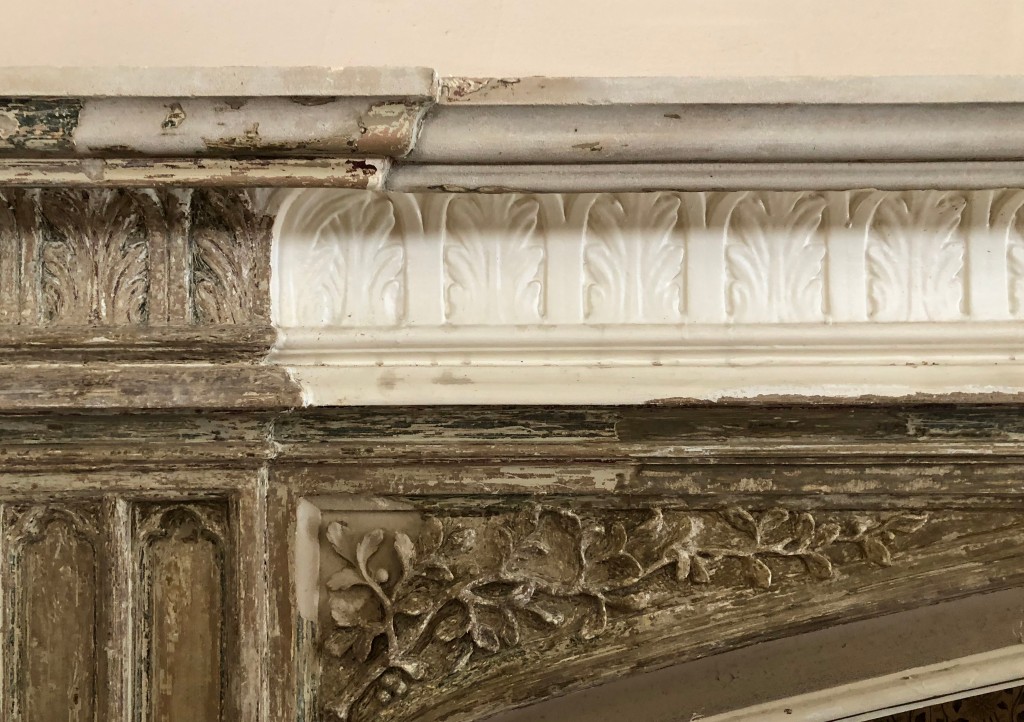Auckland Castle – Restoration in Progress
As someone who is always in the midst of projects here at the Chancongnie House, I have learned to embrace, enjoy and learn from the process itself. I relish the opportunity to observe work in progress, so it was a special treat to visit Auckland Castle in County Durham with the Attingham Summer School last year. Suffice to say that this is a project of much greater proportions than here at the Chancognie House.

For hundreds of years, going back to medieval times, the Prince Bishops of Durham were almost as powerful as the English monarch. Their power was derived from their location – Durham was close to the border between England and Scotland, which gave them a strategic location during times of war since it was not as dangerous as areas such as Northumberland further to the north.

It is little wonder that the project at Auckland Castle is such a significant undertaking. As one of the primary homes of the Prince Bishops of Durham, it was built befitting a family of such stature. Dating to the twelfth century, it served as the Bishop’s official residence from 1832 until 2012. At that time, it was taken over by The Auckland Project which has embarked on an ambitious program of restoration and interpretation.

Although Auckland Castle may look stylistically later in terms of appearance, most of the structure is medieval, the most visible remnant of which is the twelfth century great hall which now serves as the chapel. The castle was heavily damaged during the Civil War in the 1640s and the original chapel was lost. Repairs were made in the 1660s at which time the transformation from a castle to a palace began. The medieval great hall was transformed into St. Peter’s Chapel, the largest private chapel in Europe.

Beginning in the 1750s, a succession of Bishops redecorated in the emerging Gothic Revival style giving the palace its current appearance. The transformation was completed by English architect James Wyatt who created a series of state rooms in 1794-6. At the time of our visit, research had been done into the decoration of these rooms and work was underway to restore them to their Gothic Revival appearance. The private apartments of the Bishops will also be on view for the first time when Auckland Castle opens to the public (tentatively scheduled for later this year) and the plan at the time of our visit was to interpret the spaces to represent the various time periods in which the Bishops were in residence.

The setting at Auckland Castle is quite impressive with a Deer Park created by the Prince Bishops in the twelfth century as a private hunting park. The landscape was also redone starting in the 1750s with the Deer House built c. 1760 to provide shelter for the deer and serve as an “eyecatcher” to add interest to the view from the castle. There were also rooms where the Bishop and his guests could enjoy a picnic or take a break from hunting. We did not see any deer during our visit, but we did encounter a group of sheep enthusiastically running through the park.

The project has progressed quite significantly since our visit and I hope to return someday to see how it has evolved. For more on the work at Auckland Castle as well as in and around Bishop Auckland, see their website at www.aucklandproject.org. Information for this post came from The Auckland Project website, John Cornforth, ‘Auckland Castle, Co. Durham: the Seat of the Bishop of Durham – I-III’, Country Life, January 27, February 3 & 10, 1972, pp. 198-202, 266-70, 334-37 and Jeremy Musson, ‘Auckland Castle: Durham’, Country Life, December 4, 2003, pp. 82-87.



Good post and great photos. I’m excited about the castle re-opening on the second of November.
LikeLiked by 1 person
Thank you, Lesley! I wish that I could be there for the re-opening – I hope to return someday to see the completed project. Enjoy your visit!
LikeLike
Thank you. 😊
LikeLike
You are welcome!
LikeLike